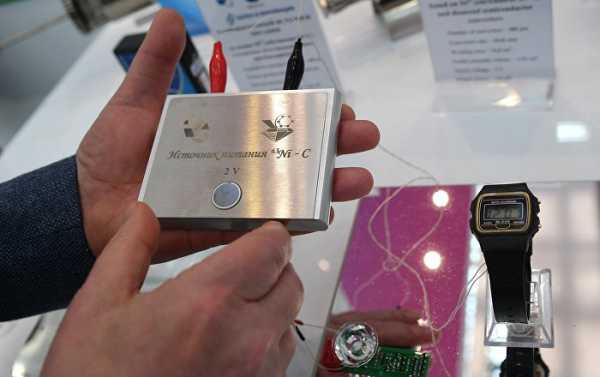
A team of Russian researchers has put forth an accurate method to forecast the properties of betavoltaic batteries, which will make their development much less costly.
The team includes researchers from the National University of Science and Technology MISiS, the Institute of Microelectronics Technology and High Purity Materials of the Russian Academy of Sciences, and the Kurchatov Institute National Research Center.
Scientists and engineers the world over have worked for 50 years to create efficient betavoltaic cells (nuclear batteries) that are capable of converting the beta-radiation of a nuclear isotope of nickel to electric energy through a conductor.
These cells have a life cycle of dozens of years and the potential for a wide range of uses from medicine to space technology.
But there is a serious constraint: researchers have been unable to accurately predict the practical parameters of the batteries, a constraint that has forced them to fall back on trial and error.
This is the problem that has been solved by the Russian researchers who have developed a realistic forecasting method to probe betavoltaic cells that are made up of a radioactive source and a semiconductor transducer. This method will make it possible to optimize the structure and parameters of betavoltaic cells and obviate the application of an expensive radioisotope coat. Among other things, this will reduce cost.
“We’ve used the idea to imitate beta-radiation with an electronic beam. But the dependencies of the absorption of beta electron and electronic beam energy on depth differ qualitatively. This is why we’ve proposed a method that uses a mono-energy electronic beam to effect the corrective imitation of beta-radiation,” Professor Boris Yakimov of NUST MISiS said.
According to Yakimov, realistic estimates of betavoltaic cell parameters will make it possible to define the areas of their potential use with greater accuracy.
The researchers’ calculations have been verified with the help of a radioactive source, which has confirmed the high accuracy of their data.
“Thus, based on a probe into the structure of a semiconductor we can accurately estimate the parameters of an element created on its basis with 30% plus accuracy. This exceeds previous calculation methods by a lot,” he added.
Calculations have been made for several groups of researchers developing betavoltaic batteries. Research results have been published in Applied Radiation and Isotopes.
Sourse: sputniknews.com






